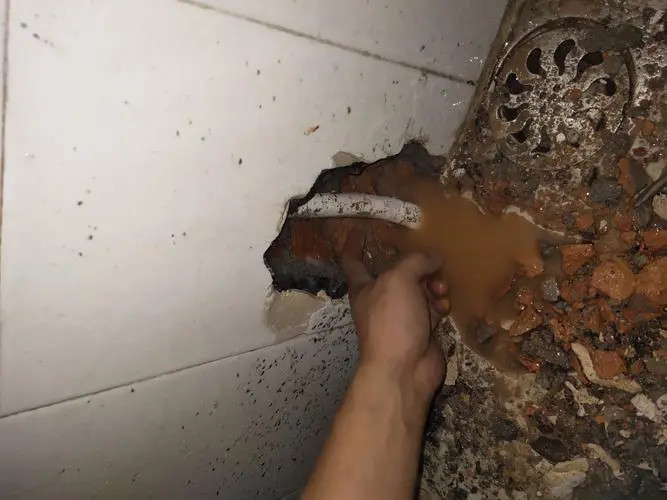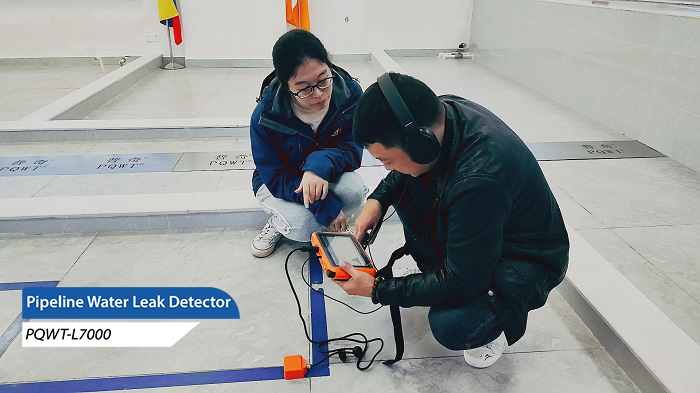As an important part of urban infrastructure, underground pipelines carry important functions such as water supply, drainage and gas. However, with the growth of pipeline service life and changes in the external environment, the problem of pipeline leakage is becoming more and more prominent, bringing great challenges to the water supply industry. The purpose of this paper is to analyze the main reasons for leakage of underground pipelines, and put forward the corresponding response to reduce the leakage rate of water supply network, improve the level of leakage detection.

First, the analysis of the causes of pipe leakage
1. Pipeline aging and over-service
With the growth of pipeline service life, pipeline materials gradually aging, losing the original elasticity and toughness, prone to cracks and breakage. In addition, some of the pipeline due to over-service, its ability to withstand pressure decreases, prone to water leakage.
2. Improper design and material selection
Pipeline design does not fully consider the impact of dynamic and static loads, resulting in the pipe buried depth is too shallow or improper selection of materials. Such as the use of explosive pipe or low working pressure pipe, easy to burst or leakage under external pressure or temperature changes.
3. Construction quality problems
Poor quality of pipeline construction is one of the important causes of water leakage. Including improper treatment of pipe foundation, tamping work is not solid, loose soil at the back of the abutment, etc., will increase the pipe stress, resulting in damage to the joints or pipe fracture.
4. External environmental impact
Hot and cold climate, the medium of the temperature fluctuations, acid and alkali soil corrosion, corrosion of the transport medium and other factors, will cause damage to the pipeline, triggering leakage accidents.
5. Other engineering interference and natural disasters
Road reconstruction and expansion, other pipeline construction, etc. may disturb the foundation of underground water pipe, resulting in damage to the pipe. In addition, natural disasters such as earthquakes, soil landslides and collapses, uneven fall of the ground, as well as man-made operational errors, etc., may also lead to pipeline leakage accidents.
Second, pipe leakage solution

Technicians use water pipe detector, along the pipeline above the interval of 0.5 meters to select points, vertical pipeline parallel displacement of three points, large pipelines using the "S" shape to select points, point by point to listen, through the water pipe detector ground sound intensity, audio detection and analysis, to accurately locate. The key lies in the different leakage points, choose different frequency bands, such as choosing the right, can improve the leakage point positioning accuracy, reduce errors. Leakage point produces leakage sound frequency and pipe network rupture size, pipe diameter, pipe material. Usually, the leakage sound of plastic pipe is a low-frequency signal, while the leakage sound of steel pipe or cast iron pipe is a high-frequency signal. Technicians in the leakage point location, must master the leakage point where the pipe diameter, pipe and other parameters, in order to correctly select the filter band, so that the main frequency of the leakage noise can be highlighted, the purpose of which is to amplify the leakage noise signal, inhibit the interference noise signal, so that the technicians can quickly and accurately locate the leakage point location.
In summary, the problem of underground pipeline leakage is one of the important challenges facing the water supply industry. By strengthening pipeline maintenance and renewal, improving design and material selection standards, enhancing construction quality management, strengthening external environmental monitoring and protection, and establishing a perfect emergency response mechanism, we can effectively reduce the leakage rate of the water supply pipeline network, improve the level of leakage detection, and escort the sustainable development of the city and the well-being of the citizens.








